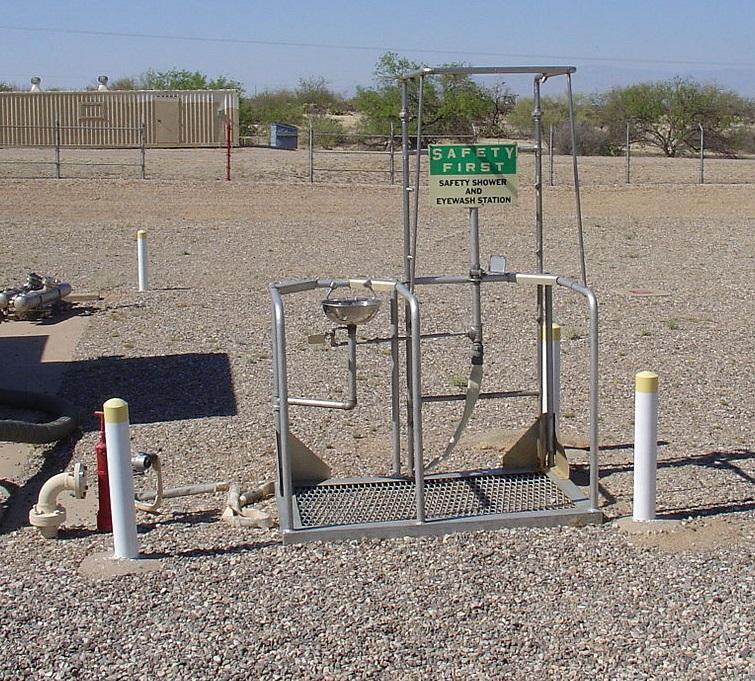In this article, I’ll be discussing the importance of tepid water for emergency equipment, and specifically, the best ways to achieve compliance with tepid water requirements. Emergency safety stations should include a tepid water delivery system in order to ensure that the discharged temperature is between 60° and 100° F (16-38° C), which meets ANSI Z358.1-2014 standards for optimal safety.
- Tepid water is defined as water that is between 60 and 100 degrees Fahrenheit. It is a requirement for emergency equipment such as emergency showers and eyewashes, as it provides a comfortable and safe temperature for employees who may need to use the equipment in an emergency situation. The reason for this is that water that is too hot or too cold can cause further injury or shock to the person using the equipment. Tepid water is intended to provide a comfortable and safe temperature for employees to use in case of an emergency.
- One of the best ways to achieve compliance with tepid water requirements is to install a temperature mixing valve. This device mixes hot and cold water to achieve the correct temperature and maintains it at a consistent level. It is important to select a valve that is rated for the flow rate and pressure of your system. This is a simple solution for ensuring the correct water temperature is being provided, and it is easy to install and maintain. It is important to note that temperature mixing valves should be installed by a qualified professional.
- Another way to achieve compliance is to install a pre-engineered tepid water system. These systems are designed specifically for emergency equipment and can provide the correct water temperature without the need for additional equipment or adjustments. They are widely available and easy to install. This solution is especially useful for larger facilities with multiple emergency equipment stations, as it eliminates the need for multiple temperature mixing valves.
- It is also possible to achieve compliance by using a water heating system such as a tankless water heater or a storage tank water heater. These systems can be set to a specific temperature and can provide the correct water temperature for emergency equipment. This solution is especially useful for facilities that have a large demand for hot water.
- It is important to regularly test and maintain emergency equipment to ensure that it is in proper working order and that the water temperature is within the required range. This includes testing and adjusting the temperature of the water, as well as inspecting and maintaining the equipment itself. This is an important step in ensuring the equipment is ready to be used in case of an emergency and that the water temperature is safe for employees.
- It is also important to properly train employees on the use and maintenance of emergency equipment, including the importance of tepid water and how to achieve compliance. This includes educating employees on the signs of non-compliant water temperature and how to report it. By providing employees with proper training and educating them on the importance of tepid water and how to report non-compliance, employers can ensure that their employees are better equipped to handle emergency situations.
- Another key aspect of ensuring compliance is to have a regular maintenance schedule in place. This includes regular testing and inspection of the equipment, as well as the water temperature, and making any necessary adjustments or repairs. It is important to have a qualified professional perform these tasks to ensure that the equipment is operating correctly and safely. This is an important step in ensuring that the equipment is always ready to be used in case of an emergency and that the water temperature is safe for employees.
In conclusion, tepid water requirements for emergency equipment are an essential aspect of workplace safety. By understanding the different ways to achieve compliance, such as using a temperature mixing valve, pre-engineered tepid water system, or water heating system, regularly testing and maintaining the equipment, and properly training employees, employers can help ensure the safety of their employees in case of an emergency. It is important to remember that emergency equipment is only effective if it is properly functioning and ready to be used in case of an emergency. Compliance with tepid water requirements is just one aspect of ensuring that emergency equipment is ready and effective in case of an emergency. Employers must take all necessary steps to ensure that their employees are
Image Reference: https://commons.wikimedia.org/wiki/File:Safety_shower_and_eyewashstation.jpg


